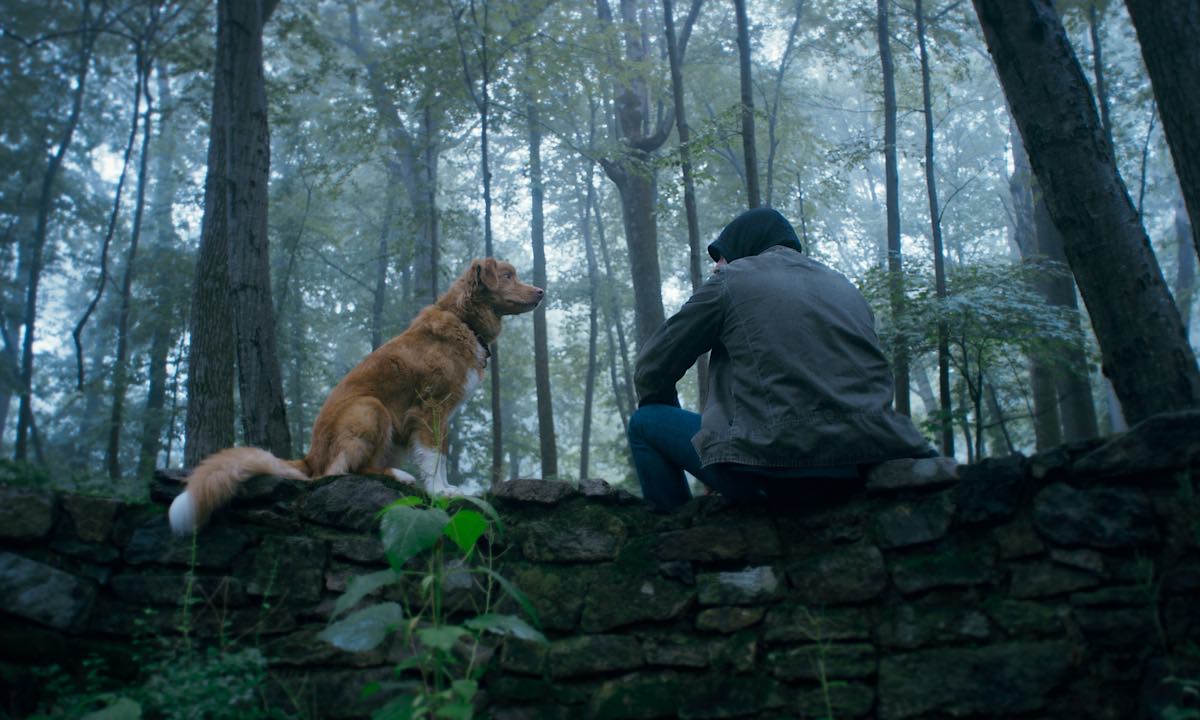

One of the oldest and most hated tropes in movies is the dog dying. There’s an entire website dedicated to it. Keanu Reeves built one of the most successful action franchises in history on the story of a man bringing the wrath of god down upon the criminal underworld for killing his dog. Hurting a dog (or any animal in general) is a cheap way to invoke a very visceral and real emotional response from the audience. It’s not quite as morally reprehensible in the eyes of most people as hurting a child, but it’s just on the edge of good taste (for most). And why? Because we love our pets. They are our babies. Our buddies. Our best friends. To many they are the children our parents wish we had. Ben Leonberg’s Good Boy places this emotional bond front and center in an exercise in sympathy towards the vulnerable, exploring how we react when our beloved four-legged friends are placed in danger, and how we process grief, loss, and death in general.

Good Boy is the story of Todd and Indy, the titular good boy. Indy is Todd’s best friend. Indeed, had Werner Herzog not already used this title for his biopic on Klaus Kinski one wonders if My Best Friend was in the running for the title of this film. The two of them have recently moved into the home of Todd’s late grandfather, and Indy immediately notices that something is wrong about this house. He begins hearing and seeing things that Todd cannot: shadowy figures skulking about and weird noises from the depths of the house. He’s having dreams that feel like warnings. Soon, Indy realizes he must do what a good boy does and protect Todd from whatever evil lurks there.

Leonberg excels at crafting a film in which there is almost no dialogue and our main character is a dog that actually feels like a story and not just random footage of a dog walking around a house sniffing things and looking nervous. The cinematography does a lot in telling the story and propelling the narration along. It creates a feeling of menacing voyeurism in which we the audience are the unseen thing watching Indy and Todd. There are plenty of long, slow zooms into darkened corners of rooms from Indy’s point of view that will have you preparing to cover your eyes in case something leaps out. Wide static shots of both the outdoor landscape and rooms in the house, as well as tracking shots of Indy exploring the house keep the viewers eyes busy darting all over the screen in search of that ominous something. Most of all, Leonberg does exactly what a good horror filmmaker is supposed to do: he creates an atmosphere of dread and expectation where even if there is no “payoff” you still feel terrified. That is not to say nothing happens in this movie; there’s plenty of classic spooky visuals, but much of the fear comes from the constant feeling that just around the corner is some ghastly thing with bad intentions. This is a very claustrophobic film, nerve wracking in the truest sense of the phrase. There are no shortcuts taken; Leonberg takes his time in ratcheting up the tension. He puts us not just in Indy’s place as the horror unfolds but manages to put our own pets in Indy’s place, making us imagine ‘what if this was Cocoabean/Maple/Peanut/Bodhi?’ and evoking the appropriate emotional response.

What could have been a cheap exercise in shock and cruelty turns out to be a rather nuanced exercise in creating anticipation of something awful, an exercise in the concept of terror vs. horror. The filmmakers were quick to reassure everyone that Indy doesn’t die, but as Jud Crandall once told us sometimes death is better. Seeing someone in the grips of true terror is equally upsetting as seeing them in physical pain. Seeing an animal in fear of its life or the life of its friend is just as bad. But instead of placing a dog in a series of scary scenarios and filming it and simply relying on a reflexive sense of outrage from the viewer, Leonberg surgically constructs a film that gets us to invest in the bond between a man and his dog, never relying on shocking visuals or saccharine cliches but instead on a very heartfelt and simple truth: Indy is Todd’s best friend, and Todd is Indy’s best friend. This relationship is the heart of this story. It’s not just our fear of Indy being hurt that hits us in the soft bits; it’s Indy’s fear for Todd that really drives the stake home. It’s not that there’s no moments where we don’t see Indy clearly terrified but rather that Leonberg has clearly conveyed he’s terrified for Todd as well as for himself.
I feel like I’ve rambled enough about this movie, so I’ll wrap it up by saying that this movie is far sadder than it is scary. Sure, there are some truly frightening scenes in this movie. Believe the hype that this is one of the scarier horror films of the year. But, in hindsight once the credits roll, it’s a profoundly heartbreaking story that explores an aspect of mourning that I haven’t seen in a film before, something that goes beyond a dog seeing ghosts and worrying about his friend and master and into territory I wish more people talked about. Sure, we worry about the physical safety of our pets, but Good Boy draws upon the emotional well-being of our pets as a source of horror.

Good Boy will certainly have its detractors. There will almost inevitably be the edge lord backlash against a film that receives any amount of hype. And that’s par for the course these days. Its slow burn approach relies more on atmosphere and expectation and putting yourself in the place of the protagonist instead of seeing a constant barrage of upsetting imagery; and a lot of people will claim that this approach is boring, but oh is it worth it. The journey will take you to some dark places, and the ending is a shot to the gut you won’t soon forget, something that will break your heart in the best way. Ultimately, it’s a deeply moving film about the power of friendship between humanity and dogs, that mysterious and ancient bond that has changed so many lives and helped so many of us through hard times. It’s a testament to the love we have for our pets and the love they have for us, and how that love is all but inviolate to the march of time and whatever terror life may have in store for us.




